Last week, Kapost’s much-loved home of Boulder, CO, made the (marketing) history books. Here, a small group of marketing and communications leaders—some previous connections, some friends-to-be, and all content revolutionaries—gathered to talk about what’s coming next for marketers: content operations.
I’m talking about the first-ever pilot run of the Content Operations Summit. We’ve been singing the content ops manifesto for some time now and we were stoked to get companies from around the country together to chat about what it means to be a content operations advocate. Sessions included key metrics and KPIs, roadmaps of content operations technology, strategy workshops, and panels featuring leaders in content operations from five enterprise companies.
The excitement was tangible—check it out:
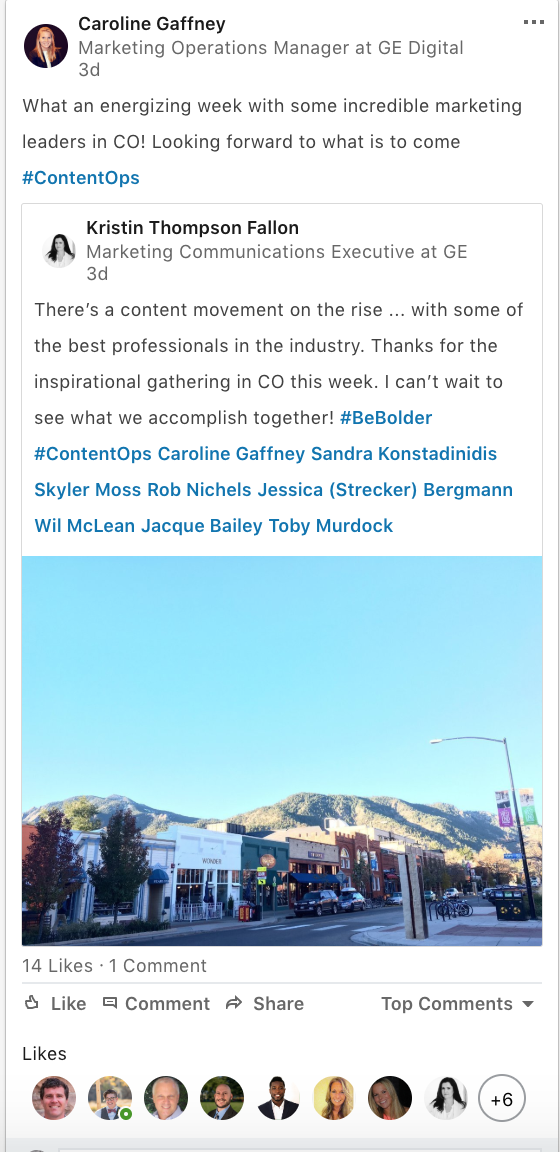
I’m sorry, am I making you jealous? Understandable, but don’t worry—you haven’t missed out (yet).
As I said, this was a pilot run and we limited it to a very small crowd of folks to confirm what we long suspected: content operations isn’t just a software company’s invention—it’s the key to closing the gaps in customer experience and better serving our audiences with high-value content.
The excitement of virtually every attendee was convicting—content ops is the future, and the marketers responsible for this revolution belong in the same room, working together to make the dream state the current state.
Of course, plans are already in the works for a wide-spread Content Operations Summit. But what kind of marketer would I be if I didn’t give you a taste of what the first Summit offered?
Key Takeaways from the Content Operations Summit 2018
In that vein, I want to take you through two of the sessions: the opening talk from Kapost’s CEO, Toby Murdock, as well as the Kapost customer panel.
The State of Content Operations
The event opened with Toby’s thoughts on the state of content. He prefaced it by saying “Don’t worry, I’m trying to scare you, but we’ve got the solution, so you don’t have to be too scared.”
But the stats really are scary. Check it out:
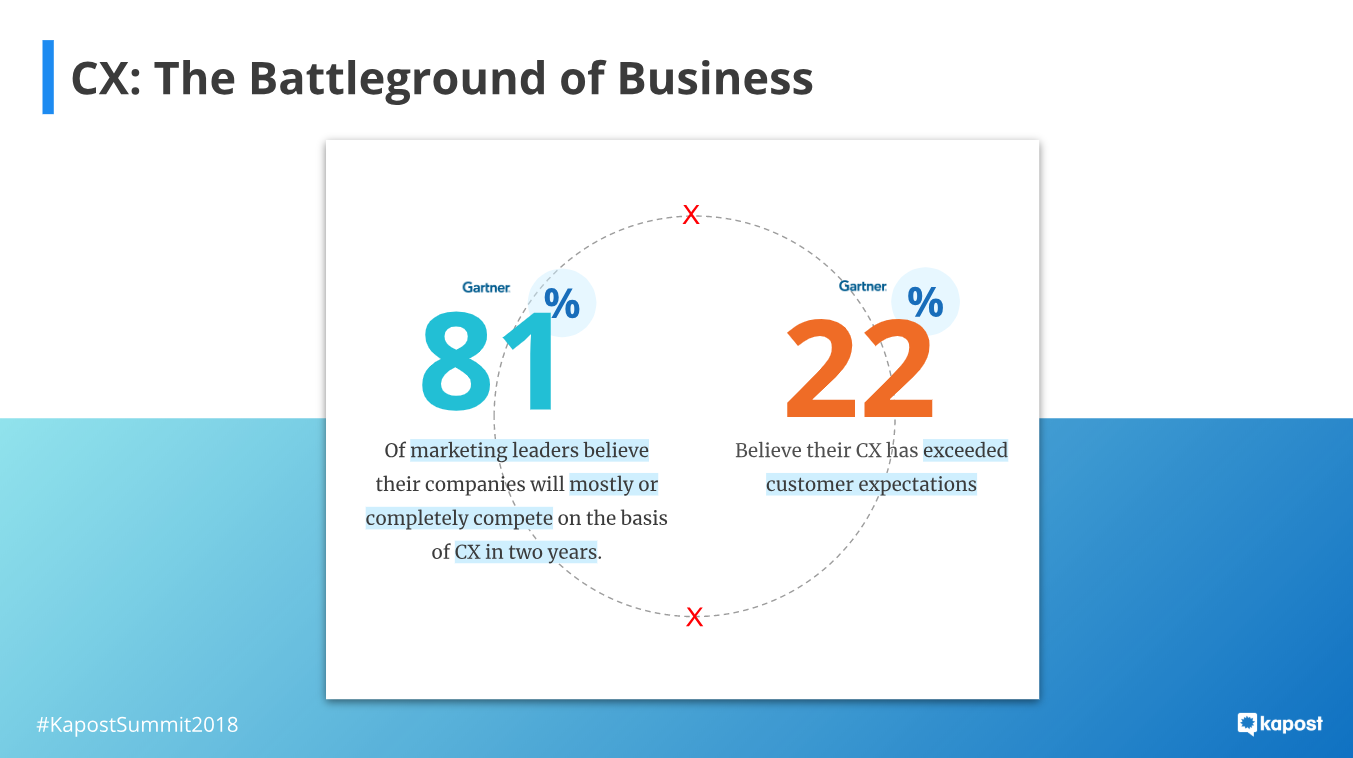
With an enormous gap between leaders who see customer experience as the main battleground for customers versus those who think their CX exceeds customer expectations, we’ve got a long way to go. Without an exceptional customer experience, how do vendors win customers?
Short answer: they don’t.
Of course, this was the first session of the summit, and Toby wasn’t about to drop the spirit of the event—nor would I want to leave you hanging on this foreboding note. So, let’s talk about the dream state of customer experience.
At the root of every customer interaction—TOFU, BOFU, full-FU—is content. Whether it’s a help article, social post, renewal proposal, or demo, the customer is constantly interacting with your content. That content is directly responsible for sales, and it’s time content got its due respect for that revenue. Part of that respect is acknowledging that a content operation requires a robust strategy and the accountability to stick to that strategy. When that’s the case, content looks like this:
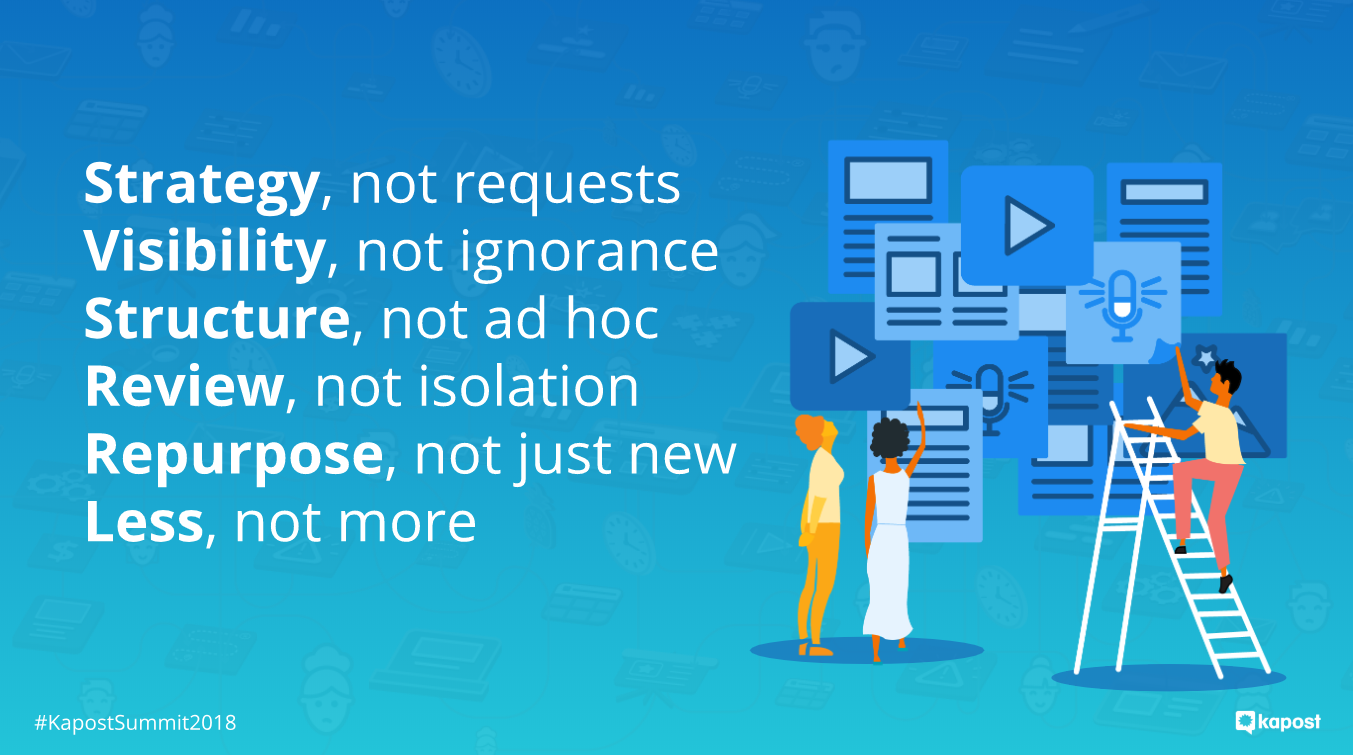
So, how do we get there? The bulk of the summit was focused on fleshing out exactly that. The cornerstone, of course, is to establish a content operation. And rather than tell you how we think you should do that, we asked some of the marketing leaders who were there.
Been There, Done That: Advice from Content Operations Leaders
We asked five of the top content operations advocates and Kapost customers to share advice for someone just starting to think about building a content operation. This is what they said:
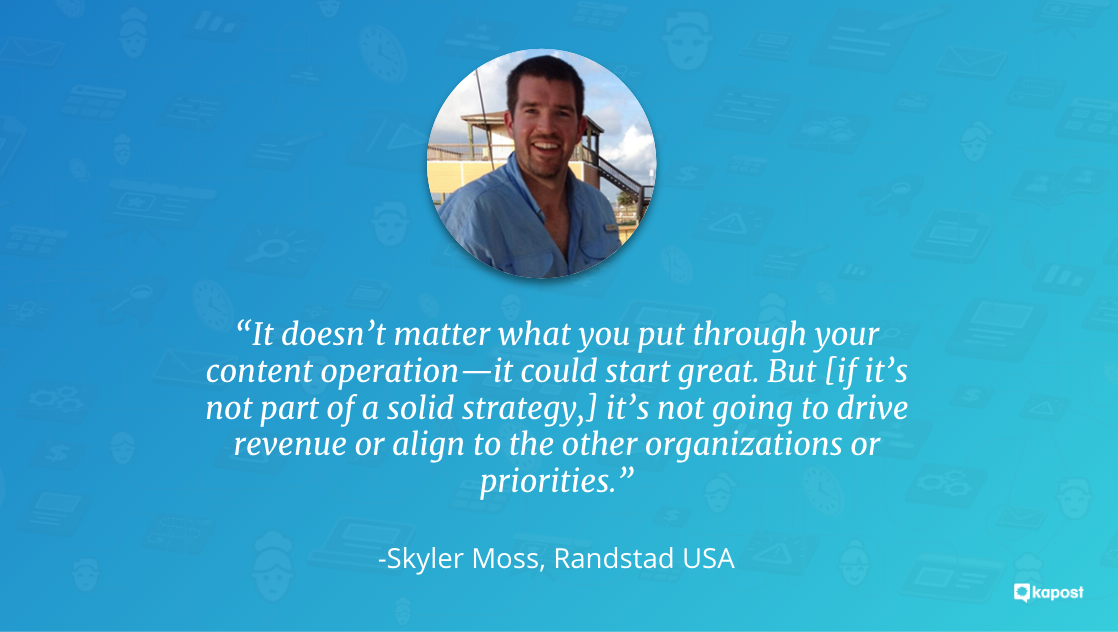
“My old basketball coach used to say ‘Garbage in, garbage out. Whatever you put in your body, that’s how you’re going to perform on the court.’
You’ve gotta start out with a holistic content strategy. If you put a bad strategy in, you’re going to get a bad outcome on the other end. It doesn’t matter what you put through your content operation—it could start great. But [if it’s not part of a solid strategy,] it’s not going to drive revenue or align to the other organizations or priorities.
To build a content operation, [focus on] the most important thing for your company: sales, revenue, different stakeholders. Make sure you align those goals, build your strategy, and then put it in Kapost.
Once stuff goes in [your CMP] from all the departments, that’s when the magic happens, and all the good stuff coming out starts to work.”
— Skyler Moss, Randstad USA
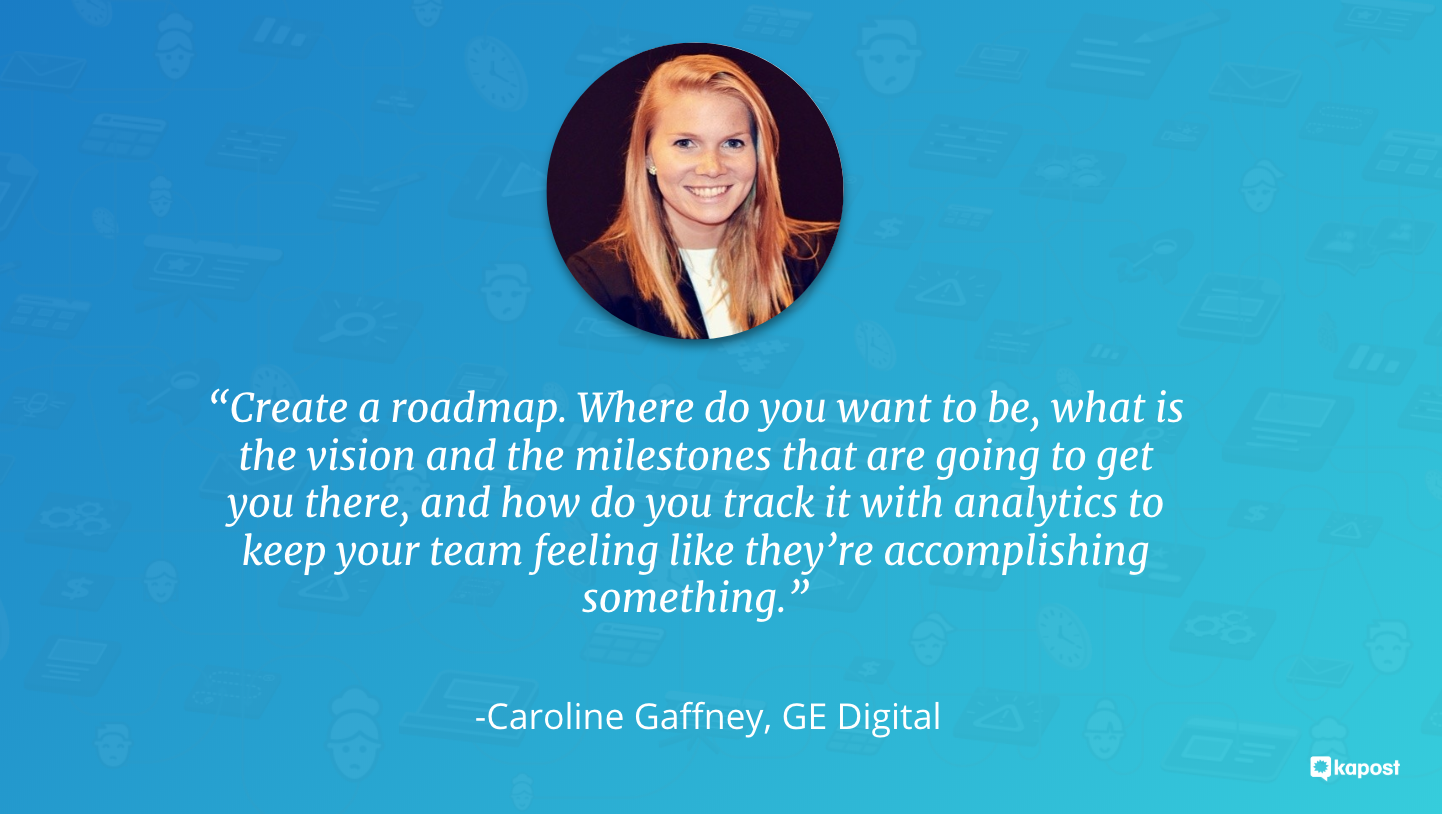 “I think it would be two-pronged. If you’re just starting out, start with process. I really believe the tool’s important, but you have to start out with figuring out how teams are working and how you want them to work.
“I think it would be two-pronged. If you’re just starting out, start with process. I really believe the tool’s important, but you have to start out with figuring out how teams are working and how you want them to work.
So that brings me to my second prong, which is to create a roadmap. Where do you want to be, what is the vision and the milestones that are going to get you there, and how do you track it with analytics to keep your team feeling like they’re accomplishing something. It’s a long path, sometimes painful, and is a team effort, so you need to really keep everyone engaged.”
— Caroline Gaffney, GE Digital
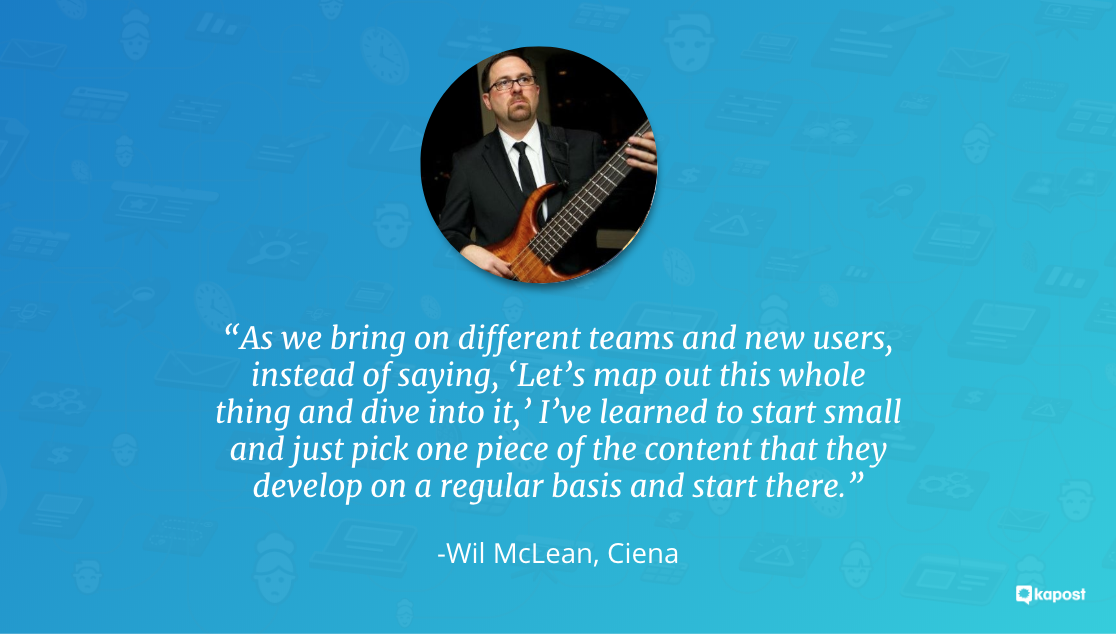
“My advice: Start small with one thing. I think we were so excited with the tool that we just started all in. [I’d say,] ‘Let’s map out every process you could possibly think of and every piece of content created and just go.’
Now as we bring on different teams and new users, instead of saying, ‘Let’s map out this whole thing and dive into it,’ I’ve learned to start small and just pick one piece of the content that they develop on a regular basis and start there.”
— Wil McLean, Ciena
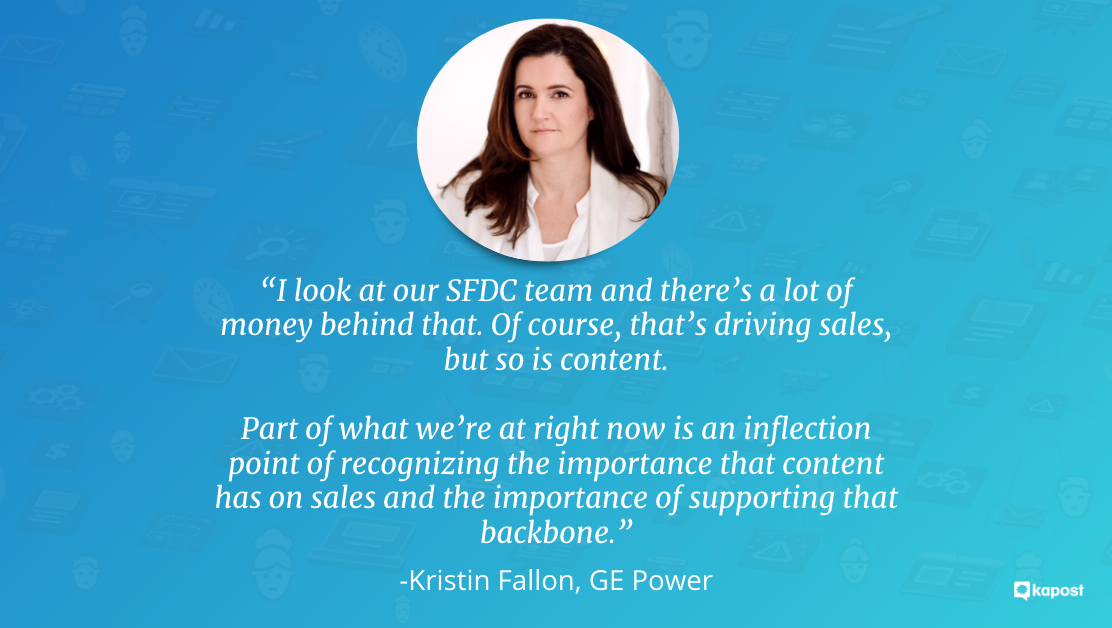 “My background is sales, and I used to work in SFDC, that’s where I tracked all my information. I really think that Kapost is analogous to a CRM in that sales people have their digital tool where they operate on a daily basis and track their information. Now we have the tool where we can operate on a daily basis and make our work more effective.
“My background is sales, and I used to work in SFDC, that’s where I tracked all my information. I really think that Kapost is analogous to a CRM in that sales people have their digital tool where they operate on a daily basis and track their information. Now we have the tool where we can operate on a daily basis and make our work more effective.
I think that analogy has really helped me sell the tool internally and is what’s helping me now to justify getting more resources to support the implementation of it. I look at our SFDC team and there’s a lot of money behind that. Of course, that’s driving sales, but so is content.
Part of what we’re at right now is an inflection point of recognizing the importance that content has on sales and the importance of supporting that backbone.”
— Kristin Fallon, GE Power
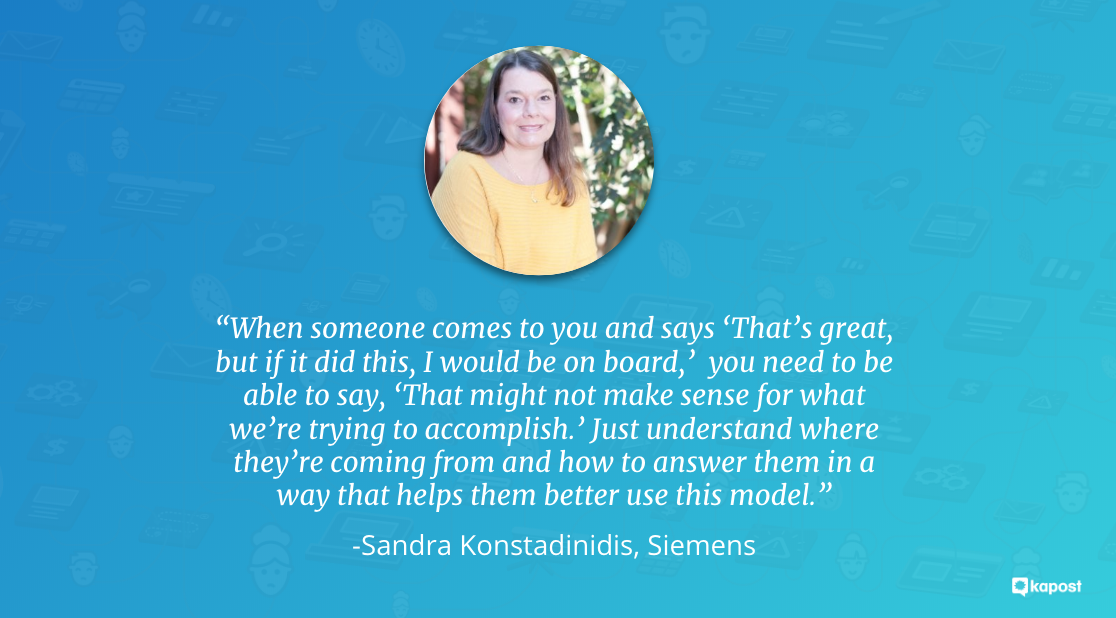
“My advice is twofold. One is that not a lot of people in our organization understand the term of content operations. They live in this world of chaos, creating content, but they can’t articulate it and when I say I’m content ops, they give me this glazed look.
[You need] The ability to articulate what it is and [understand] where they’re going to come from. Their reaction is ‘Oh, that would be great, but I need it to do this, and that.’
The next step is that you need to understand that there are different marketing technologies that serve different purposes. Some serve the web, some serve the DAM, some serve sales enablement. And content operations, or any MarTech, should not be all things for all people.
When someone comes to you and says ‘That’s great, but if it did this, I would be on board,’ you need to be able to say ‘That might not make sense for what we’re trying to accomplish.’ Just understand where they’re coming from and how to answer them in a way that helps them better use this model.”
— Sandra Konstadinidis, Siemens
How to Prepare for the Content Operations Summit 2019
A few requests came from this summit’s attendees:
One, the ability to benchmark your content operation. Attendees loved the ability to check in with similar organizations about where they were in the process of establishing a content operation—sharing how it was going, what key learnings were at each stage, and what to look forward to in the future. Good news: We made an assessment to do just that. Take the ten-minute Content Operations Self-Assessment here.
Two, ways to enable organizational buy-in to content operations. It’s one thing to have an advocate, it’s another to have a team doing great content ops work and proving the value, and it’s an entirely other thing to have an organization that sees, values, and invests in that work. We truly believe this starts with having the team buy-in. We’ve created Workshop Facilitation Cards to help you get everyone onboard and eliminate barriers to success. Download them here.
Three, (perhaps our favorite request), to make this event bigger and better next year. To enable you, fellow marketers, to get in a room together to hash out not just best practices, but what will define the best practices of the future. If you want to be part of this revolution, check out the two tools I mentioned above—they’ll put you on the road to the next summit.
See you there!


